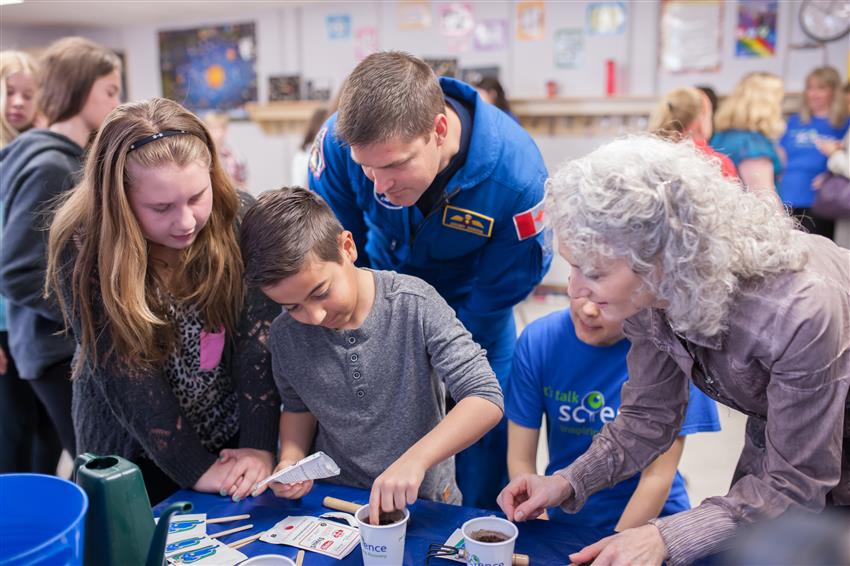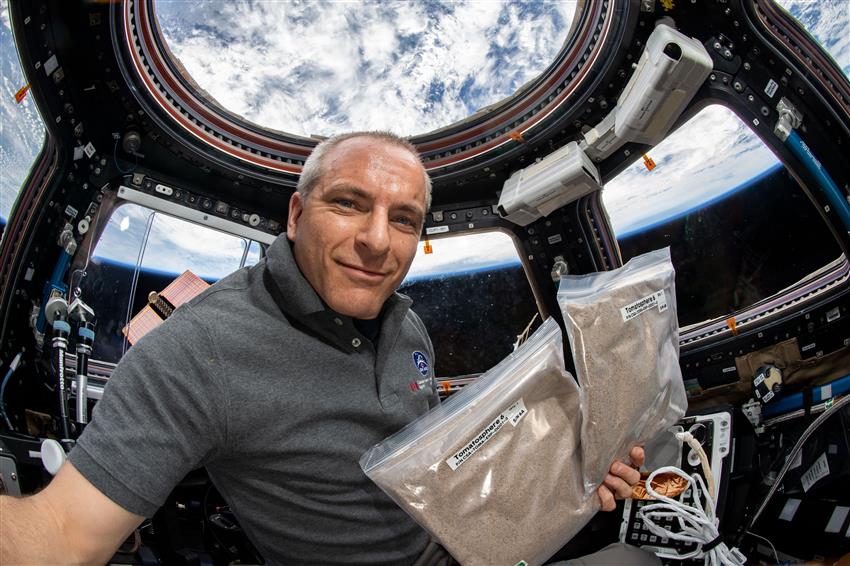TomatosphereTM: Sowing the seeds of discovery through student science
Is it possible to grow fruits and vegetables in space despite the challenges of weightlessness and radiation? What types of seeds could germinate in space's hostile conditions?
In the program's first 15 years (-), over three million students across Canada and the United States have worked to answer those questions by taking part in the award-winning TomatosphereTM program. In the - school year alone, 210,000 were reached. Led by Let's Talk Science, this educational project's hands-on approach to learning gives students a real taste for science.
European Space Agency (ESA) astronaut Thomas Pesquet explains the TomatosphereTM project. (Credits: Canadian Space Agency [CSA], NASA, ESA, Let's Talk Science)
Check out Tomatosphere Adventure, a learning activity from Let's Talk Science! This Minecraft Education game for students aged 10 and up was developed in collaboration with the CSA and Logics Academy. (Credits: CSA, NASA, Logics Academy, Minecraft Education)
Transcript of the video entitled Dive into Tomatosphere Adventure!
Space agencies around the world are working to send humans to Mars. Since bringing enough food for a mission lasting two to three years would be too expensive and impractical, astronauts will have to grow their own healthy food while in space.
In the closed environment of a spacecraft, plants grown on board can make a huge contribution to life-support systems. Plants can provide food, produce oxygen, and recycle carbon dioxide and some organic waste.
How to participate
The teacher orders a seed kit.
Two batches of seeds will be sent:
- A batch that has been exposed to the space or space-like environment
- A batch of control seeds, for comparison
- The students grow all of the seeds in the classroom "blind," without knowing which are space seeds.
- They measure and record information about the tomato plants including germination rates and growth patterns.
- They submit the results online so that they are available to scientists who study horticulture and environmental biology.
- The students bring the tomatoes home and make a salsa that's out of this world!

Grade 6 students from Byron Northview Public School in London, Ontario, plant TomatosphereTM seeds with CSA astronaut Jeremy Hansen and Bonnie Schmidt, President and Founder of Let's Talk Science. (Credit: CSA)
Teaching students to think like scientists
By participating, students can:
- awaken their interest in science and space
- discover related STEM topics such as
- the science of plants
- life cycles and ecosystems
- health and nutrition
- space travel and exploration
- agriculture on Earth and in space
- enjoy the satisfaction of bringing home their own "space tomatoes"
- know that they are personally contributing to future space exploration
Why tomatoes? Because they are easy to grow, versatile, nutritious and delicious. They have high levels of vitamin A and vitamin C and also contain lycopene, an ingredient that may help prevent certain cancers and cardiovascular disease. Tomato plants are an ideal choice for space travel as they provide wholesome nourishment and water through transpiration from their leaves. Through photosynthesis, tomato plants also convert light energy and carbon dioxide exhaled by astronauts into oxygen that is needed for survival.
In , there were 528,277 tonnes of fresh tomatoes produced in Canada, second only to the potato as the most-produced vegetable or fruit. And over 294 million kilograms of tomatoes were grown in Canadian greenhouses. (Source: Statistics Canada)
Partners
The consortium of partners who oversee TomatosphereTM include:
- Let's Talk Science
- HeinzSeed
- Stokes Seeds
- University of Guelph
- First the Seed Foundation
- Canadian Space Agency
Let's Talk Science manages the operations of TomatosphereTM in Canada while First the Seed Foundation manages the operations of TomatosphereTM in the United States.

